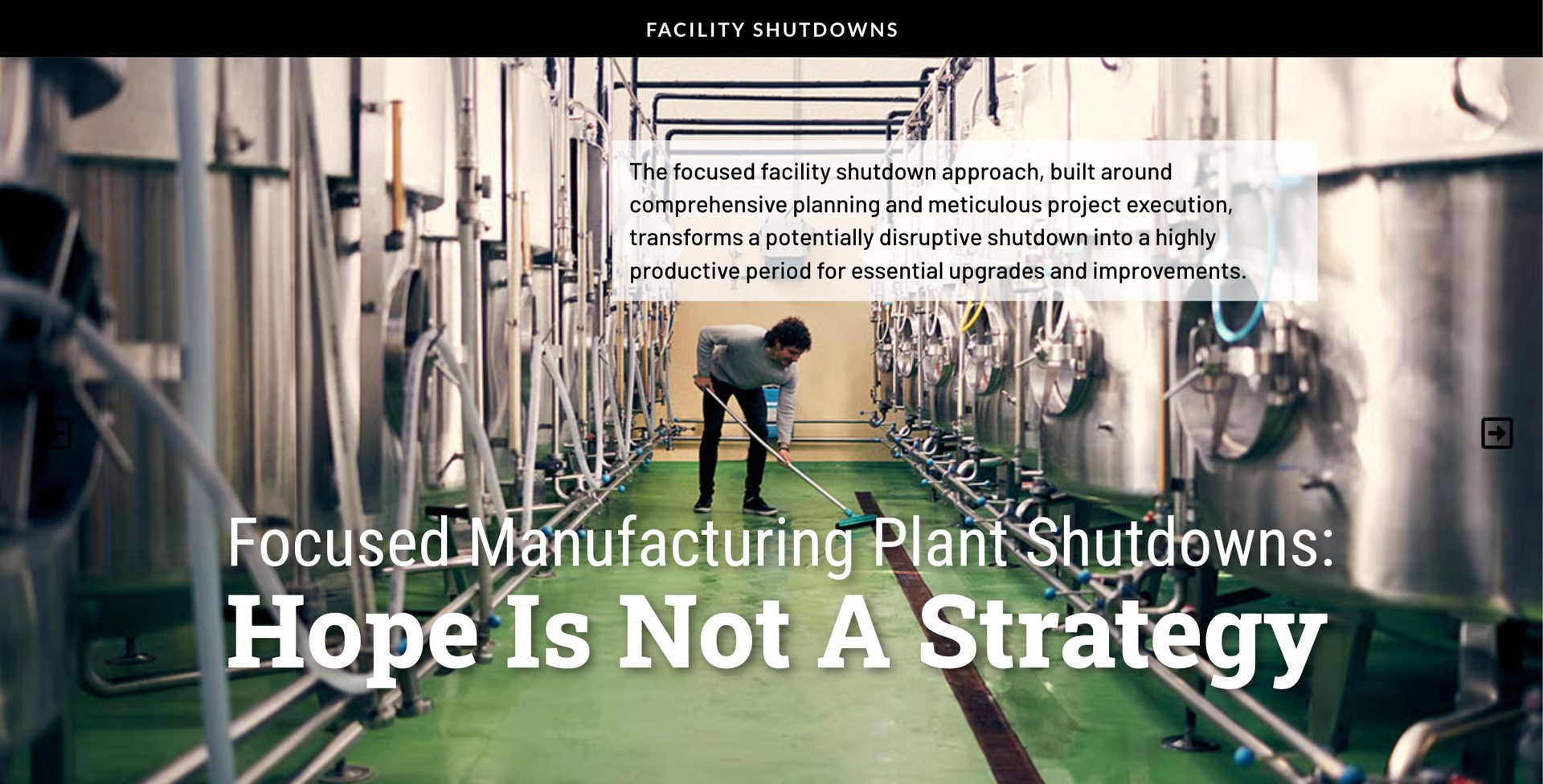Machine Plastic
for Food Processing Equipment
As throughput rates continue to rise, so do the demands on traditional materials, equipment designers and maintenance personnel. Understanding the capabilities of a broader range of equipment material options allows for quality designs.
Selecting the Right Plastic
Nowadays, it’d be difficult to walk around a food processing plant blindfolded without eventually bumping into a piece of plastic — and for good reason.
The advantages of using plastics in food processing equipment are well-documented. While delving into these advantages is outside the scope of this article, three commonly cited benefits of plastics include eliminating the need for lubrication (which can trap and act as a contaminant), reduced weight relative to other materials (which can increase throughput rates while simultaneously reducing energy costs), and increased system life through superior wear performance.
Given the benefits of plastics, choosing to use one in an application is often fairly straightforward. However, identifying which plastic material to use can prove much more complicated. FDA-compliant engineering plastics, such as high-density polyethylene (HDPE), ultra-high molecular weight polyethylene (UHMW), acetal, nylon, polyethylene terephthalate (PET) and polyetheretherketone (PEEK), regularly compete for the same applications, but each material has distinct performance characteristics.
Photo courtesy: Getty Images / Matveev_Aleksandr
Dave Seiler, business development manager, Curbell Plastics, Inc.
HDPE is the cheapest material of the group. When the higher strength, broader temperature resistance or enhanced wear performance of higher-performance plastics are not required, HDPE is frequently specified. Mass market components such as cutting boards, food trays and cabinetry are often made of HDPE for this reason. On food processing equipment, HDPE machine guides are especially popular, though other HDPE components abound.
Despite its popularity, HDPE has its shortcomings. Notably, it is susceptible to warping or creeping at elevated temperatures. In addition, HDPE has been found to be roughly 100 times less abrasion-resistant than UHMW [1].
Besides exhibiting extreme abrasion resistance, UHMW also boasts a low frictional coefficient. It can handle higher loads than HDPE, making it a logical upgrade for applications such as sprockets, bearings, wear strips and conveyor guide components. Specialty-filled grades of UHMW are available for higher load applications, such as the curved portions of high-speed conveying systems.
Another advantage of UHMW is its cold temperature performance. UHMW maintains ductility and impact resistance under freezing conditions, often making it a strong candidate for components used in chillers and related equipment.
Acetal and nylon represent a significant increase in strength and stiffness from HDPE and UHMW. These materials can also stand up better to elevated temperatures experienced during steam cleaning operations.
As we observed with HDPE and UHMW, unlike with metals, the hardness of a plastic material is not directly indicative of its abrasion resistance nor its wear performance. In fact, acetals typically report higher hardness values yet exhibit less abrasion resistance than comparable (unfilled) nylons. In addition, under more demanding pressure and velocity conditions, nylons have been shown to wear at roughly half the rate of acetal materials in dry environments [2].
Despite the potential wear advantages, unfilled nylon materials are hygroscopic. At saturation, these materials are capable of absorbing upwards of 8% moisture by weight, which corresponds to 2-3% dimensional change. While complete saturation may be of more academic than practical interest, even in an environment with a relative humidity of around 50%, unfilled nylon tends to absorb around 1.5–2% moisture by weight [3].
Although every material discussed in this piece is readily machinable, acetal is widely regarded as the easiest plastic to machine. It is also readily obtainable in blue color for enhanced optical detectability.
It is important to work with a knowledgeable supplier when exploring alternate versions of FDA materials. Just because a material is listed as compliant with industry regulations (such as the FDA), it does not automatically mean that the material is compliant in any form. For instance, molybdenum-filled nylon is not FDA-compliant from all sources. In the same way, pigmented materials (black, blue, etc.) require appropriate pigments to maintain relevant compliances, so not all blue-colored acetals are automatically “food grade.”
When acetal and nylon lack the required dimensional stability for an application, PET becomes a viable option. PET provides increased sliding wear resistance over acetal and nylon. For even more demanding sliding wear applications, FDA-compliant grades containing a fluoropolymer additive with greatly reduced friction are commercially available.

Dave Seiler
is a business development manager for Curbell Plastics who focuses on high-performance engineering plastics. Born into a family of plastics professionals, Seiler has been involved with performance plastics his whole life. Seiler spends much of his free time reading academic literature on a diverse base of polymer materials. Seiler has an extensive background in polyaryletherketones and handles Curbell’s DuPont Vespel Polyimide product line. Much of his work involves helping companies identify the best plastic materials for their applications in order to achieve quality improvements and cost savings.
PET displays broader chemical resistance to acids than acetal or nylon but is more prone to brittle fracture after extended exposure to strong caustics. PET is also susceptible to hydrolysis in the presence of continued exposure to steam.
The last material on our list is PEEK. PEEK isn’t prone to creep, it doesn’t absorb a ton of moisture, nor is it susceptible to hydrolysis. The disadvantage of PEEK is simple: it’s expensive. Very expensive. For a stock shape, on a dollar per pound basis, PEEK costs roughly 15 to 20 times as much as acetal.
That said, downtime is also very expensive, so sometimes PEEK ends up being the lowest cost option. PEEK components are reliable and can operate continuously in environments as hot as 480°F. PEEK has even been shown to wear at less than one-fourth the rate of nylon in rolling contact situations [4].
As food processing throughput rates continue to rise, so do the demands levied not only on traditional materials, but also on equipment designers and maintenance personnel. Understanding the capabilities of a broader range of material options allows for quality designs that stock our shelves and keep our food clean.
Resources
- Budinski, Kenneth. Resistance to particle abrasion of selected plastics. Wear, Elsevier, 1997, p. 304.
- Quadrant High Performance Products and Applications Guide. Quadrant, 2017, pp. 11, 17, 19.
- Sepe, Michael. “Dimensional Stability After Molding: Part 4.” Plastics Technology. Plastics Technology, 25 Mar. 2013, https://www.ptonline.com/articles/dimensional-stability-after-molding-part-4.
- Harras, M., et al. Tribological behavior of selected engineering polymers under rolling contact. Tribology International, Elsevier, 2010, p. 641.


